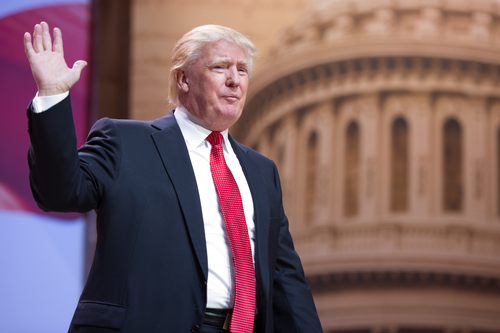Trump Kim summit: US president hails deal after historic talks
US President Donald Trump says his historic talks with North Korean leader Kim Jong-un that ended in a joint agreement were “tremendous”.
The signed document includes a pledge from Mr Kim to rid the Korean peninsula of nuclear weapons.
But in an extraordinary media conference later, Mr Trump announced details not in the paper.
He said he would halt US military exercises in South Korea, something widely seen as a concession.
The meeting was the first time a sitting US president has met North Korea’s leader, and caps a remarkable turnaround for the two.
Last year saw the pair sling various insults at each other, while North Korea conducted several ballistic missile tests in defiance of the international community.
For both men the meeting brought much to gain as well as considerable risk.
The meeting is seen by North Korea as a way of bringing legitimacy to a nation long regarded as a pariah. Should Mr Trump resolve the North’s nuclear threat, he would have achieved something none of his predecessors came close to.
What did they agree?
The summit centred on nuclear disarmament and reducing tensions.
The agreement said the two countries would co-operate towards “new relations”, while the US would provide “security guarantees” to North Korea.
On nuclear weapons, Mr Kim “reaffirmed his firm and unwavering commitment to complete denuclearisation of the Korean peninsula”.
Observers say the document lacks substance, in particular on how denuclearisation would be achieved.
However, speaking to reporters after, Mr Trump said:
- The US would suspend “provocative” war games it holds with South Korea. Mr Trump said he wanted to see US troops withdraw from the South. A spokesperson for the US forces said they had yet to receive any new guidance
- On denuclearisation, he said that Mr Kim had agreed to it being “verified”, a key US demand ahead of the meeting
- Mr Trump said Mr Kim had also agreed to destroy a “major missile engine testing site”
- But he said sanctions would remain in place for now and argued “we haven’t given up anything”.
Several reporters asked whether Mr Trump had raised the issue of human rights with Mr Kim, who runs a totalitarian regime with extreme censorship and forced-labour camps.
The US president said he had, and did not retract his description of Mr Kim as “talented”.
“Well, he is very talented,” Mr Trump said. “Anybody that takes over a situation like he did at 26 years of age and is able to run it and run it tough. I don’t say he was nice.”
In a post-summit interview with ABC News, the president said he was confident that the agreement meant full denuclearisation.
“Yeah, he’s de-nuking, I mean he’s de-nuking the whole place. It’s going to start very quickly. I think he’s going to start now,” he said.
“I think he trusts me and I trust him,” Mr Trump added.
What’s the reaction been?
Largely positive. South Korean President Moon Jae-in, who held his own meeting with Mr Kim earlier this year, said the “two Koreas and US will write new history of peace and co-operation”.
A spokesman, though, also said the “exact meaning and intention” of what Mr Trump had said “needs to be assessed”.
China, North Korea’s only major diplomatic and economic ally, also said the meeting created a “new history”. The foreign ministry said sanctions on North Korea could be eased if it stuck to UN resolutions.
Japanese Prime Minister Shinzo Abe praised President Trump’s “leadership and effort”, saying he supported North Korea’s pledge on denuclearisation as “a step towards the comprehensive resolution of issues around North Korea”.
But Russia warned that the “devil is in the detail” and Iran said North Korea should not trust the US. Mr Trump recently pulled the US out of a nuclear deal with Iran.
In the US, political opinion is mixed. Democratic Senator Mark Warner criticised the decision to give Mr Kim “the pomp, circumstance and prestige of a meeting with the president of the United States – while making no specific commitments in return”.
Republican Senator Marco Rubio took issue with President Trump praising Kim Jong-un, tweeting that the North Korean leader was “a total weirdo who would not be elected assistant dog catcher in any democracy”.
Republican majority leader Mitch McConnell congratulated the president, saying he shared “his hope that it will begin a process that leads to an historic peace”.
Analysis: What happens next?
By Jenny Town, research analyst at the Stimson Center think tank
The Singapore summit was certainly historic, but the results are harder to judge.
Past US presidents have avoided granting such a meeting without North Korea first making verifiable progress toward dismantlement of their WMD programmes.
Trump has forgone this traditional diplomatic approach for one that could potentially make negotiations more agile.
The personal relationship now established between Mr Trump and Mr Kim may also help prevent us in the future from returning to “fire and fury”.
The test is now on the Trump administration to see if they have the political will to sustain this process and move the negotiation past broad commitments to durable and sustainable solutions.
How the day unfolded
The summit began with a striking image, unimaginable just months ago.
The two men walked towards each other and firmly gripped each other’s hands in front of US and North Korean flags.
Sitting alongside each other, ahead of a one-on-one meeting, the pair appeared relaxed against the odds.
“It was not easy to get here,” Mr Kim said. “There were obstacles but we overcame them to be here.”
The two men, accompanied only by interpreters, spoke for a little under 40 minutes. They were then joined by small delegations of advisers for a working lunch.
Over lunch they shared a mix of Western and Korean dishes, including stuffed cucumbers and Daegu jorim, a soy-braised fish dish.

